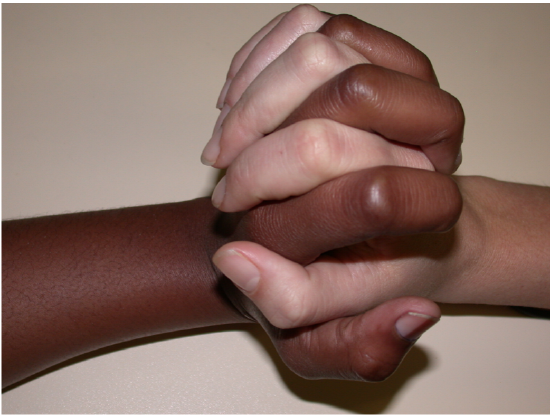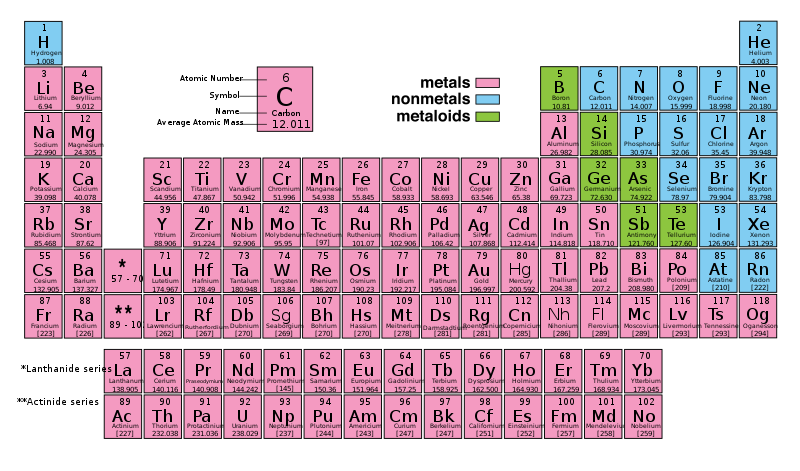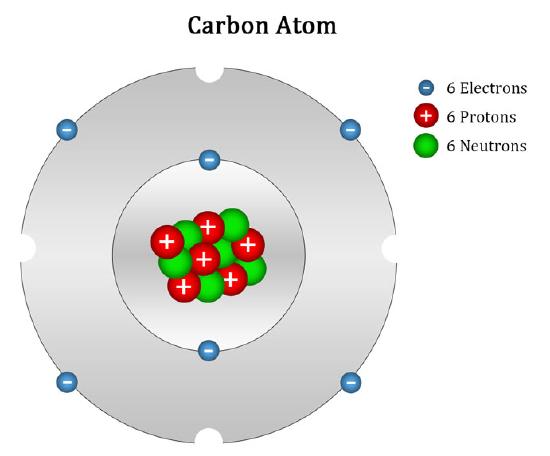What Is an Element Biology Definition
3.2: Elements and Compounds
-
- Last updated
- Save as PDF
- Page ID
- 16726
-

- Professors (Cell Molecular Biology & Plant Science) at Butte College
What Are You Made of?
If you look at your hand, what do you see? Of course, you see skin, which consists of cells. But what are skin cells made of? Like all living cells, they are made of matter. In fact, all things are made of matter. Matter is anything that takes up space and has mass. Matter, in turn, is made up of chemical substances. A chemical substance is a matter that has a definite composition and the same composition throughout. A chemical substance may be either an element or a compound.

Elements and Atoms
An element is a pure substance. It cannot be broken down into other types of substances. Each element is made up of just one type of atom.
Periodic Table of the Elements
There are almost 120 known elements. As you can see in the Periodic Table of the Elements shown in Figure \(\PageIndex{3}\), the majority of elements are metals. Examples of metals are iron (Fe) and copper (Cu). Metals are shiny and good conductors of electricity and heat. Nonmetal elements are far fewer in number. They include hydrogen (H) and oxygen (O). They lack the properties of metals. The element most important to life is Carbon (C). Find carbon in the table. What type of element is it, metal or nonmetal?

Structure of an Atom
An atom is the smallest particle of an element that still has the properties of that element. Every substance is composed of atoms. Atoms are extremely small, typically about a ten-billionth of a meter in diameter. However, atoms do not have well-defined boundaries, as suggested by the atomic model shown in figure \(\PageIndex{2}\). An atom is composed of many subatomic particles. We will only discuss protons, neutrons, and electrons.
| Particle | Proton | Neutron | Electron |
|---|---|---|---|
| Electric Charge | +1 | 0 | -1 |
| Location | Nucleus | Nucleus | Outside the nucleus |
| Mass | 1 amu | 1 amu | ~0 amu |

If the number of protons and electrons in an atom are equal, then an atom is electrically neutral because the positive and negative charges cancel out. If an atom has more or fewer electrons than protons, then it has an overall negative or positive charge, respectively, and it is called an ion.
The negatively charged electrons of an atom are attracted to the positively charged protons in the nucleus by a force called electromagnetic force, for which opposite charges attract. Electromagnetic force between protons in the nucleus causes these subatomic particles to repel each other because they have the same charge. However, the protons and neutrons in the nucleus are attracted to each other by a different force, called nuclear force, which is usually stronger than the electromagnetic force repelling the positively charged protons from each other.
Compounds and Molecules
A compound is a unique substance that consists of two or more elements combined in fixed proportions. This means that the composition of a compound is always the same. The smallest particle of most compounds in living things is called a molecule. Consider water as an example. A molecule of water always contains one atom of oxygen and two atoms of hydrogen. The composition of water is expressed by the chemical formula H2O. A model of a water molecule is shown in Figure \(\PageIndex{4}\). Notice that molecules can be drawn in different ways, but represent the same molecule. In this case, a molecule made of one oxygen and two hydrogens.
What causes the atoms of a water molecule to "stick" together? The answer is chemical bonds. A chemical bond is a force that holds together the atoms of molecules. Bonds in molecules involve atoms sharing electrons. New chemical bonds form when substances react with one another.

Review
- What is an element? Give three examples.
- Define compound. Explain how compounds form.
- Compare and contrast atoms and molecules.
- The compound called water can be broken down into its constituent elements by applying an electric current to it. What ratio of elements is produced in this process?
- Relate ions to elements and atoms.
- What is the most important element of life?
- Iron oxide is often known as rust — the reddish substance you might find on corroded metal. The chemical formula for this type of iron oxide is Fe2O3. Answer the following questions about iron oxide and briefly explain each answer.
- Is iron oxide an element or a compound?
- Would one particle of iron oxide be considered a molecule or an atom?
- Describe the relative proportion of atoms in iron oxide.
- What causes the Fe and O to stick together in iron oxide?
- Is iron oxide made of metal atoms, metalloid atoms, nonmetal atoms, or a combination of any of these?
- Explain why ions have a positive or negative charge.
- Name the three subatomic particles described in this section.
Explore More
What Is an Element Biology Definition
Source: https://bio.libretexts.org/Bookshelves/Human_Biology/Book%3A_Human_Biology_(Wakim_and_Grewal)/03%3A_Chemistry_of_Life/3.02%3A_Elements_and_Compounds